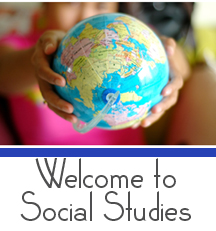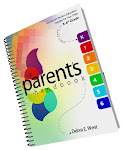Tuesday, May 31, 2011
Monday, May 30, 2011
Online Classes for Middle or High Schoolers
Posted by Unknown at 6:35 PM 0 comments
Labels: How to Get the Best Education Possible for Your Child, Tips for parents
Happy Memorial Day
Happy Memorial Day
I want to truly thank all the men and women who served and are serving our country in the armed forces. It is because of your love dedication to this country all children can get the "Best Education Possible". God Bless you all and God Bless America! Have a wonderful Memorial Day!!
Debra West
Posted by Unknown at 7:41 AM 0 comments
Labels: Best Wishes
Sunday, May 29, 2011
Great Teacher Gifts: Part 2
Posted by Unknown at 2:00 PM 2 comments
Labels: How to Get the Best Education Possible for Your Child, Tips for parents
Saturday, May 28, 2011
Great Teacher Gifts: Part 1
Posted by Unknown at 2:00 PM 1 comments
Labels: How to Get the Best Education Possible for Your Child, Tips for parents
Friday, May 27, 2011
Your Fifth Grader and Technology: Part 1
Keyboard and mouse
Posted by Unknown at 2:00 PM 0 comments
Labels: How to Get the Best Education Possible for Your Child, Tips for parents
Thursday, May 26, 2011
Your Fourth Grader and Technology: Part 2
Posted by Unknown at 2:00 PM 0 comments
Labels: How to Get the Best Education Possible for Your Child, Tips for parents
Wednesday, May 25, 2011
Your Fourth Grader and Technology: Part 1
Posted by Unknown at 2:00 PM 1 comments
Labels: How to Get the Best Education Possible for Your Child, Tips for parents
Tuesday, May 24, 2011
Your Third Grade and Technology: Part 2
Posted by Unknown at 2:00 PM 0 comments
Labels: How to Get the Best Education Possible for Your Child, Tips for parents
Monday, May 23, 2011
Your Third Grader and Technology: Part1
Posted by Unknown at 2:00 PM 0 comments
Labels: How to Get the Best Education Possible for Your Child, Tips for parents
Saturday, May 21, 2011
Keeping Away From High-Fat Dairy
So, what does all this mean? We need to make sure we have our families eating healthy low-fat dairy when they are young. That way it won't be an issue later on in life. When children are raised on a low-fat, low-sodium, low-sugar, foods, they are less likely to desire those things as adults. Start by cutting back on unhealthy choices and substituting for healthier foods. Everyone will feel better!
Posted by Unknown at 2:00 PM 0 comments
Friday, May 20, 2011
Technology and The Preschool Classroom: Part 2
Posted by Unknown at 2:00 PM 0 comments
Labels: How to Get the Best Education Possible for Your Child, Tips for parents
Thursday, May 19, 2011
Technology and The Preschool Classroom: Part 1
What to expect in preschool: The classroom By Diana Townsend-Butterworth
Posted by Unknown at 2:00 PM 0 comments
Labels: How to Get the Best Education Possible for Your Child, Tips for parents
Wednesday, May 18, 2011
Forbes List For Getting A Great Education
Posted by Unknown at 2:00 PM 0 comments
Labels: How to Get the Best Education Possible for Your Child, Tips for parents
Tuesday, May 17, 2011
Teaching Your Child About The Flooding Along the Mississippi River
Posted by Unknown at 2:00 PM 0 comments
Labels: How to Get the Best Education Possible for Your Child, Tips for parents
Monday, May 16, 2011
Teaching Your Child About Tornados
Tornadoes
1.What is a tornado?
A tornado is a violent rotating column of air extending from a thunderstorm to the ground. The most violent tornadoes are capable of tremendous destruction with wind speeds of up to 300 mph. They can destroy large buildings, uproot trees and hurl vehicles hundreds of yards. They can also drive straw into trees. Damage paths can be in excess of one mile wide to 50 miles long. In an average year, 1000 tornadoes are reported nationwide.
With extreme weather, emergency disaster's happen all the time, so you need survival food when the weather turns ugly. By taking special precautions and having an emergency food supply, you'll be much more likely to stay safe.
2.How do tornadoes form?
Most tornadoes form from thunderstorms. You need warm, moist air from the Gulf of Mexico and cool, dry air from Canada. When these two air masses meet, they create instability in the atmosphere. A change in wind direction and an increase in wind speed with increasing height creates an invisible, horizontal spinning effect in the lower atmosphere. Rising air within the updraft tilts the rotating air from horizontal to vertical. An area of rotation, 2-6 miles wide, now extends through much of the storm. Most strong and violent tornadoes form within this area of strong rotation.
3. What is a funnel cloud?
A funnel cloud is a rotating cone-shaped column of air extending downward from the base of a thunderstorm, but not touching the ground. When it reaches the ground it is called a tornado.
4. How do tornadoes stop?
It is not fully understood about how exactly tornadoes form, grow and die. Tornado researchers are still trying to solve the tornado puzzle, but for every piece that seems to fit they often uncover new pieces that need to be studied.
5. What is a supercell thunderstorm?
A supercell thunderstorm is a long-lived thunderstorm whose updrafts and downdrafts are in near balance. These storms have the greatest tendency to produce tornadoes that stay on the ground for long periods of time. Supercell thunderstorms can produce violent tornadoes with winds exceeding 200 mph.
6. What is a mesocyclone?
A mesocyclone is a rotating vortex of air within a supercell thunderstorm. Mesocyclones do not always produce tornadoes.
7. What is a wall cloud?
A wall cloud is an abrupt lowering of a rain-free cumulonimbus base into a low-hanging accessory cloud. A wall cloud is usually situated in the southwest portion of the storm. A rotating wall cloud usually develops before tornadoes or funnel clouds.
8. What is a waterspout?
A waterspout is just a weak tornado that forms over water. They are most common along the Gulf Coast. Waterspouts can sometimes move inland, becoming tornadoes causing damage and injuries.
9. What is hail?
Hail is created when small water droplets are caught in the updraft of a thunderstorm. These water droplets are lifted higher and higher into the sky until they freeze into ice. Once they become heavy, they will start to fall. If the smaller hailstones get caught in the updraft again, they will get more water on them and get lifted higher in the sky and get bigger. Once they get lifted again, they freeze and fall. This happens over and over again until the hailstone is too heavy and then falls to the ground.
10. What is the largest hailstone recorded in the United States?
According to the National Weather Service, the largest hailstone is 8 inches in diameter and weights approximately 2 pounds. It fell in Vivian, South Dakota on July 23, 2010.
11. What is a gustnado?
A gustnado is a short-lived, relatively weak whirlwind that forms along a gust front. A gust front is the surge of very gusty winds at the leading edge of a thunderstorm's outflow of air. Gustnadoes are not tornadoes. They do not connect with any cloud-base rotation. But because gustnadoes often have a spinning dust cloud at ground level, they are sometimes wrongly reported as tornadoes. Gustnadoes can do minor damage.
12. What is a landspout?
A landspout is a very weak tornado that is not associated with a wall cloud or a mesocyclone. It is the land equivalent of a waterspout.
13. When are tornadoes most likely to occur?
Tornadoes can happen at any time of the year and at any time of the day. In the southern states, peak tornado season is from March through May. Peak times for tornadoes in the northern states are during the summer. A few southern states have a second peak time for tornado outbreaks in the fall. Tornadoes are most likely to occur between 3 p.m. and 9 p.m.
14. Where are tornadoes most likely to occur?
The geography of the central part of the United States, known as the Great Plains, is suited to bring all of the ingredients together to forms tornadoes. More than 500 tornadoes typically occur in this area every year and is why it is commonly known as "Tornado Alley".
Posted by Unknown at 2:00 PM 0 comments
Labels: How to Get the Best Education Possible for Your Child, Tips for parents
Sunday, May 15, 2011
How To Deal With Tantrums in Public!
Tantrums are a normal part of childhood. But there are ways you can head them off at the pass, shorten them, or at least lessen their nuclear impact. Altmann advises parents:
Posted by Unknown at 2:00 PM 0 comments
Labels: Health and the family, Tips for parents
Saturday, May 14, 2011
How To Have a Healthy Child
Being fit is a way of saying a person eats well, gets a lot of physical activity (exercise), and has a healthy weight. If you're fit, your body works well, feels good, and can do all the things you want to do, like run around with your friends.
Some steps only parents can take — such as serving healthy meals or deciding to take the family on a nature hike. But kids can take charge, too, when it comes to health.
Here are five rules to live by, if you're a kid who wants to be fit. The trick is to follow these rules most of the time, knowing that some days (like your birthday) might call for cake and ice cream.
Eat a Variety of Foods, Especially Fruits and Vegetables
You may have a favorite food, but the best choice is to eat a variety. If you eat different foods, you're more likely to get the nutrients your body needs. Taste new foods and old ones you haven't tried for a while. Some foods, such as green veggies, are more pleasing the older you get. Shoot for at least five servings of fruits and vegetables a day — two fruits and three vegetables.
Here's one combination that might work for you:
•at breakfast: ½ cup (about 4 large) strawberries on your cereal
•with lunch: 6 baby carrots
•for a snack: an apple
•with dinner: ½ cup broccoli (about 2 big spears) and 1 cup of salad
Reviewed by: Mary L. Gavin, MD
Date reviewed: February 2009
To read the entire article go to kidsealth.org. It will be worth your time.
Posted by Unknown at 2:00 PM 0 comments
Friday, May 13, 2011
Teaching Your Child About The Mississippi River Flooding 2011
Posted by Unknown at 2:00 PM 0 comments
Labels: How to Get the Best Education Possible for Your Child, Parenting Tips
Thursday, May 12, 2011
Elementary Social Studies
Posted by Unknown at 2:00 PM 0 comments
Labels: How to Get the Best Education Possible for Your Child, Tips for parents
Wednesday, May 11, 2011
Social Studies Curriculum for Elementary Schools
Posted by Unknown at 2:00 PM 0 comments
Labels: How to Get the Best Education Possible for Your Child
Tuesday, May 10, 2011
Teaching Your Child About Pollination
Below is an easy to understand article about pollination that can help you explain the process to your child.
Posted by Unknown at 2:00 PM 0 comments
Labels: How to Get the Best Education Possible for Your Child, Tips for parents






























